
STORY HIGHLIGHTS
- Futuristic designs at this year’s Index Awards include self-assembly homes, waterless toilets and kites that can measure air pollution
- Designers believe that the way we live, work and travel will be entirely different in the coming years
- These innovations provide more sustainable living solutions to the ones we currently employ
Editor’s note: Every two years, the prestigious INDEX: Awards seek out designers working on innovative solutions to global challenges. The article below, part of a special CNN series, is a dramatic representation of how we might use several technologies that have been nominated for the awards. Some of them are currently still at the prototype stage, but many are already in production.
(CNN) — It is a bright cold day in April, and the walls are gently throbbing. You open your eyes in time to see the Wall Smart paint of your brand new apartment slowly brightening from black to white as nano-particles rearrange themselves to absorb a different part of the spectrum.
As you slip out of bed the Trap Lights in the ceiling begin to cast their soft glow. You look up at the lampshade, not really a shade at all but a sculpture in glass that amplifies and preserves the precious light. You watch as the low-energy LED at its center flickers off and the shade continues to glow, its photoluminescent pigments recycling and re-emitting the light it has absorbed.
You give silent thanks for your Zircone waterless toilet. At least you no longer have to think before flushing.
You like your new home despite its diminutive size. It’s a Keret House squeezed into the gap between two old office blocks, its walls and floors snapped together like Lego from D-Process modules — the high-quality prefabricated blocks that make up your self-assembly home.
Once this alleyway had been dismissed as dead space. Now, you and hundreds like you have brought it back to life. Your grandparents had been skeptical. No one could live in just 14 square-meters of space, they said, but you jumped at the chance. How else could you live in the beating heart of the London Megacity?
You look out of your single square window and are relieved to see that the streets are glistening wet in the sunlight. Your Cloudburst tank was running low and the overnight rain will have replenished supplies. You switch the tap from mains to gray water and fill the sink for your morning ablutions.
Before you pull the plug you check the sewer status on your DontFlushMe digital read-out. Hard though it is to believe, London still depends on its original Victorian sewers, and sometimes they struggle to cope with the output of its 20 million inhabitants. Today is one of those days, and you set your sink to drain automatically when the situation improves. Once again, you give silent thanks for your Zircone waterless toilet. At least you no longer have to think before flushing.
Your smartwatch vibrates against your wrist to let you know that it’s time to leave. You glance at it to check the air quality reading relayed from the megacity’s network of FLOAT weather kites and are unsurprised to see that it’s well within safe limits.
Since fossil-fuel vehicles were banned from the city you’ve rarely had to wear your CleanSpace mobile respirator. As you leave you make sure your new Nest predictive thermostat has learned your daily routine and switched off the heating in preparation for your departure.
Your neighbor smiles as you leave your apartment and you smile back warmly. You step into the street with a spring in your step, always gladdened by the sight of the Grey to Green pavement, which incorporates greenery into the sidewalk. It looks especially fine this morning, the shrubs and grasses embedded in the sidewalk rejuvenated by the overnight rain.
You reach Tower Bridge, but the roadway is raised for a fleet of Ecoline cargo ships making their way up the river, their great sails billowing in the breeze. You curse them and the delay they have caused you, but you know you shouldn’t: the Ecoliners have cut marine emissions dramatically and brought down the cost of products shipped around the world.
Still, you need to get to work and the bridge won’t be open for several minutes. Your smartwatch reminds you of the Wavejet service and you decide to take the plunge. You find a station on the river bank, swipe your watch on the reader and pick up your Wavejet board.
It hums into life as you place it on the water and clamber aboard. You order it to full power and cling on tightly as it surges forward, propelled by underwater jets. You’re making good progress and you break into a smile — the skyscrapers and turbines of the Canary Wharf heritage zone look different from the river. Not even a splash or two of water can dampen your spirits. Your clothes and gadgets are protected by Liquipel technology, which throws off water droplets before they make you wet.
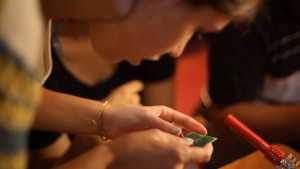 Countdown to world’s largest design awards
Countdown to world’s largest design awards
You drop off the board, feeling exhilarated by the experience, but undeniably cold. You seek out an Atlante hotbench and sit back against the warm bars of the seat and backrest, soaking up the heat channeled up from the Tube station below. You check the reading on your Cardiopocket display, which lists your heart rate and other key health data, and realize that you’re not as fit as you thought you were. Perhaps you should use the Wavejet more often.
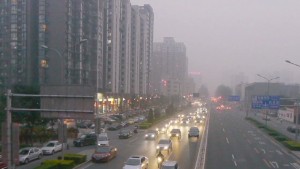 Index: Designs to improve life
Index: Designs to improve life
Your smartwatch vibrates again. You need to get a move on if you want to reach the office on time. You look around and see a Hiriko electric car standing upright by the roadside. You swipe your watch against it and wait for it to sidle out of its tiny parking space and settle down into driving mode. You look at the credit dial on your watch. This may be a quick way of getting around, but it’s not going to be cheap.
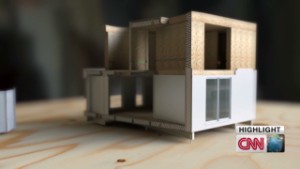 Building high-tech, snap-together homes
Building high-tech, snap-together homes
And maybe it’s not going to be quick either. Reactive paint on the Smart Highway warns of roadworks ahead, a rarity since the introduction of Bacteriacrete, the self-healing road surface knitted together by calcite-secreting bacteria. You’re relieved to see that the works are minor and the traffic is barely slowing as it passes over the Dynapac machine, which bridges the damage as it makes the repairs.
A few bumps wouldn’t go amiss, you think. The battery could do with a boost from the GenShock shock absorbers, which recharge the car as they smooth the ride.
You arrive, just in time, at your ultra-sustainable office block. The sun is streaming through the window and onto your screen so you order your Smart Energy Glass window to darken and convert the light it absorbs into electricity.
Instead, you switch on the Hybrid Fiber light on the ceiling, which pipes in daylight using fiber-optic cables. You remember the first time you saw the technology, nurturing one of the underground parks that now line every Tube station. You have a version in miniature on your desk, a small collection of plants growing happily in their Hydrogel compound.
You place your teabag and apple core into your Re-Feed desktop composter and tip the resulting liquid fertilizer into your office garden.
You suppose you should do some work, and set about dealing with the day’s deliveries. Your army of Matternet courier drones respond to your command and set off across the city and beyond. You brighten the window to watch them go, then retreat to your screen to monitor their progress electronically.
One you watch with particular interest as it wings your lunch towards you, eventually hovering above your desk while you take out the piping hot package. You read the Memory Everywhere Thinfilm dynamic label, which describes the journey of each ingredient and confirms that all temperature and bacteria profiles meet the required standard for safe consumption.
If only you had a plate. Someone has taken yours from the cupboard, again, and you think about tracking down the culprit. It is marked with SelectaDNA security paint so it wouldn’t be too hard to solve the crime. You imagine sending out one of your Matternet drones to exact your revenge and then cast the idea aside. On balance, you think, it’s a good thing that drones have been disarmed since the ruinous airwars of the previous summer. Far better just to print out a new plate with your MakerBot Replicator.
It’s raining by the time you head home for the evening, so you whip out your Nubrella, which encases your head and shoulders like an oversized space helmet.
No one could live in just 14 square-meters of space, they said, but you jumped at the chance.
Secure and dry under its protective shell, you wonder why you put up with the inconvenience of the traditional umbrella for so long. You ask your smartwatch for a dry, economical way home and it points you towards the Navia driver-less shuttle. You are in luck. The shuttle arrives almost immediately, heralded by the SLS lighting system that glows red as it pulls into the station to warn you of its approach.
You settle down and think about what to eat for dinner. It’s late and it’s been a long day. You don’t feel like cooking. You’ve earned a treat, you tell yourself, as your smartwatch reads out the options from the Casserole Club meal-sharing plan. You see that your neighbor, the one who smiled at you earlier, has food going spare. You try to ignore the Cardiopocket readout. You already know that your heart is beating faster.
Original article:
The post Future city appeared first on Arne Ruhnau News.
via Arne Ruhnau News http://arneruhnau.com/future-city/
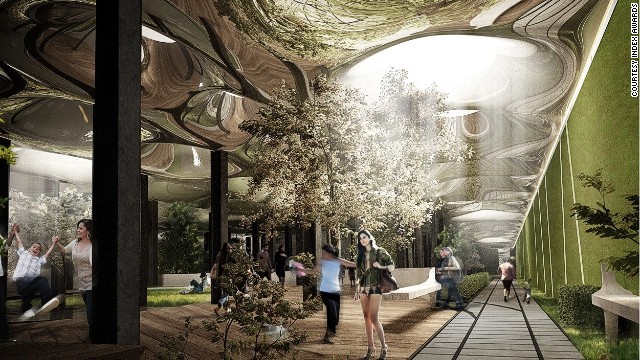 The Lowline is a proposal to create an underground park in the disused Williamsburg Trolley Terminal in New York. Plants and trees would be nourished by sunlight piped from the surface by fiber-optic cables.
The Lowline is a proposal to create an underground park in the disused Williamsburg Trolley Terminal in New York. Plants and trees would be nourished by sunlight piped from the surface by fiber-optic cables. 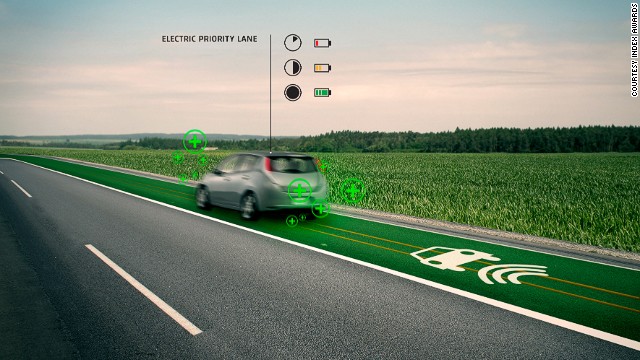 Smart Highways are a concept for the road of the future, which would charge electric vehicles as they drove over it and change color to warn drivers when the temperature dropped below freezing.
Smart Highways are a concept for the road of the future, which would charge electric vehicles as they drove over it and change color to warn drivers when the temperature dropped below freezing. 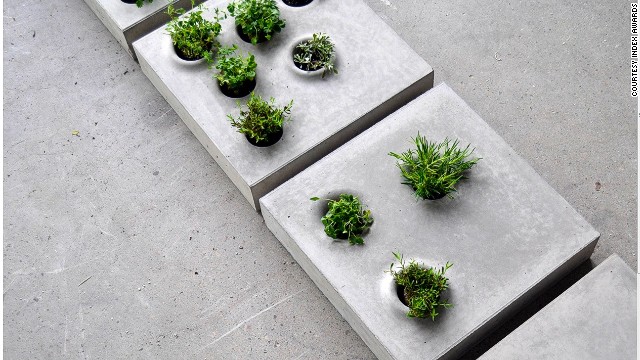 Grey to Green is a simple, low-tech way to break up the monotony of the urban landscape. Paving stones studded with hardy plants bring some greenery to the concrete jungle.
Grey to Green is a simple, low-tech way to break up the monotony of the urban landscape. Paving stones studded with hardy plants bring some greenery to the concrete jungle. 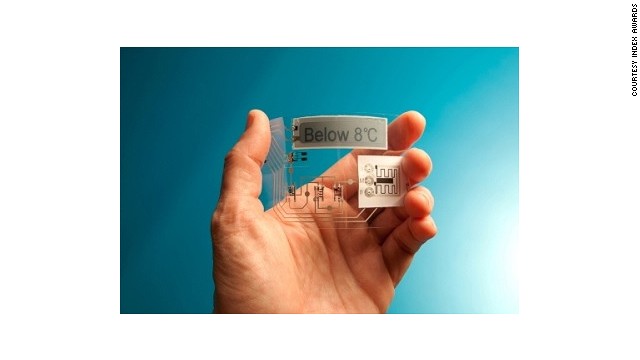 Memory Everywhere labels include a sensor and memory chip printed onto an adhesive backing. One potential use is in monitoring and displaying information about the temperature at which food has been stored.
Memory Everywhere labels include a sensor and memory chip printed onto an adhesive backing. One potential use is in monitoring and displaying information about the temperature at which food has been stored. 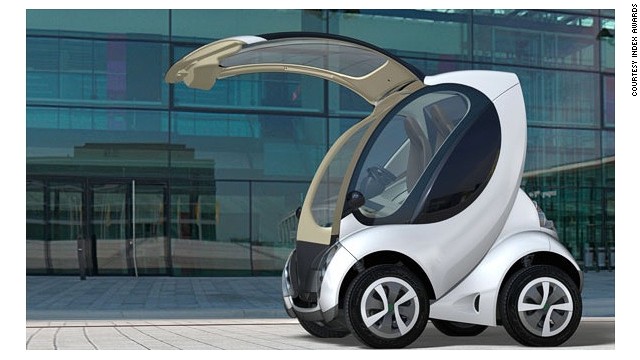 The Hiriko is an electric car that “folds” into a vertical position, as seen in this image, to take up less room when it’s stationary. It is expected to go into commercial production in 2014.
The Hiriko is an electric car that “folds” into a vertical position, as seen in this image, to take up less room when it’s stationary. It is expected to go into commercial production in 2014. 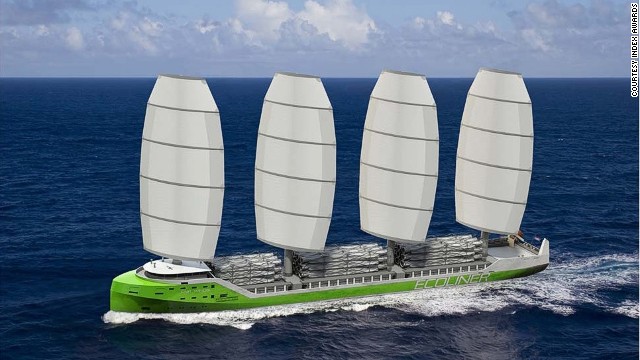 The Ecoline is a prototype cargo ship that makes use of large sails to reduce its fuel consumption by half. A conventional engine provides back-up power when the wind drops.
The Ecoline is a prototype cargo ship that makes use of large sails to reduce its fuel consumption by half. A conventional engine provides back-up power when the wind drops. 





No comments:
Post a Comment